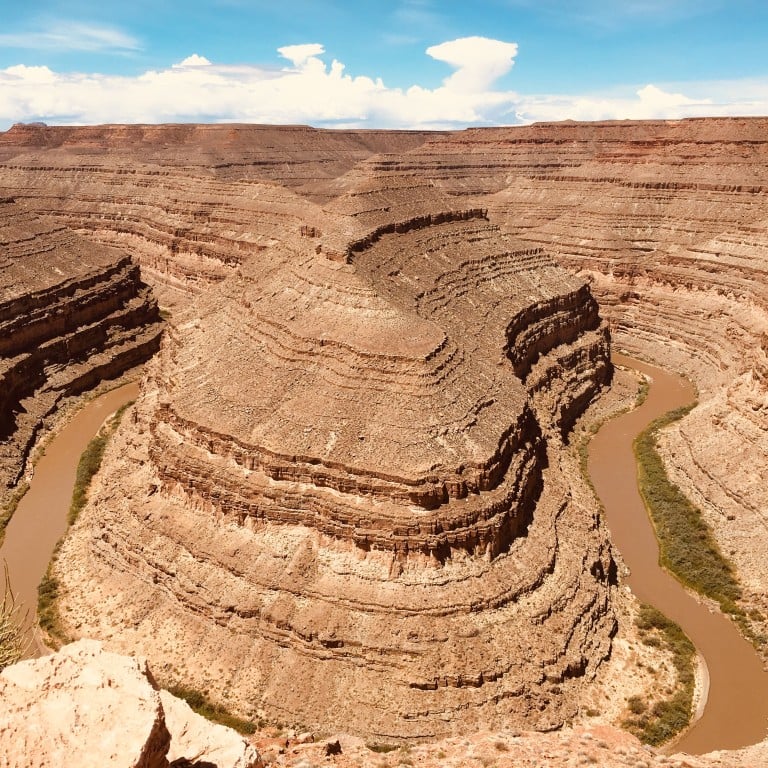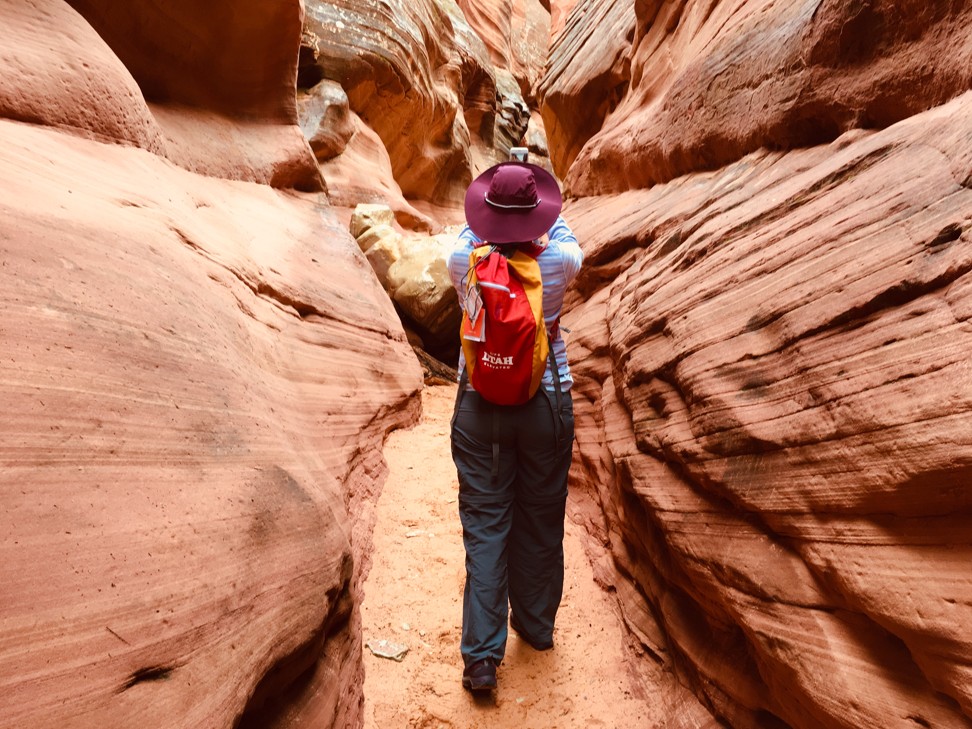
Canyon-hopping in Utah’s great outdoors – a place for stargazers, history buffs, and fans of Western films to get away from it all
- There are a fistful of reasons for fans of The Lone Ranger and Billy the Kid, history buffs and those looking to escape the crowds to visit western desert state
- Ancient petroglyphs, stunning scenery and star-splattered skies are just rewards for venturing beyond Utah’s famed national parks
Southern Utah punches above its weight – all of the American state’s national parks (Arches, Bryce Canyon, Canyonlands, Capitol Reef and Zion) are here, after all – and a growing number of its visitors are venturing off the beaten track.
One of Utah’s biggest draws is Zion National Park. Its proximity to Las Vegas makes it a straightforward day trip, and it slots neatly into park-focused road trips from Sin City – Zion, Monument Valley and the Grand Canyon can be combined. But the parks become congested at peak times – 4.3 million people visited Zion last year.
Just under 100km away, at Red Canyon, there are no queues. Otherwise known as Peek-a-Boo Canyon, this is a deep, narrow gorge carved out of the ribbons of rust-red sandstone surrounding the city of Kanab. The landscape should be familiar to those who have seen the Westerns Billy the Kid (1941), The Lone Ranger (1938) and The Outlaw Josey Wales (1976), all of which were filmed in the area.
We bounce across the cactus-dotted, boulder-strewn terrain in a jeep with our grizzled, one-armed guide, Brent, to the entrance of the narrow gorge. Formed over millennia by water coursing over the rock, the pink, red and orange layers are pockmarked with geological reminders of their submarine origins, such as tiny, white, star-shaped chunks of fossilised seaweed.

Brent points to small indents in the rock and explains that they are Moki steps – created years ago by Native Americans as ladders up to nooks in the stone used as grain stores or shelters. The fact that these steps begin several metres above the desert floor is a reminder that the canyon is still being thrust upwards.
During an hour-long hike through narrow Red Canyon we encounter just two other people, the silence otherwise disturbed only by the scampering feet of a lizard or the screech of an eagle.
Four hundred and twenty kilometres east of Kanab is Bears Ears, a national monument (protected public land) established by president Barack Obama in 2016. It was 1.35 million acres before being reduced in size by Donald Trump in 2017, controversially, by 85 per cent. Regarded as sacred by Native American tribes, Bears Ears has at its heart two towering stone buttes, although the area is also known for its rock drawings, including the Sand Island Petroglyphs. These drawings were created, with antlers used as hammers to tap away at chisels made from stone, between 800 and 2,500 years ago.
Our guide points out arrow-wielding stick men, ridiculously well-endowed horses and rampaging bison. Closer to ground level (the genuine petroglyphs are all several metres above the desert floor) are more recent doodles. An ode to an ex-girlfriend, scrawled, according to the sign-off, in 1981, is a reminder that areas like this need protecting. It seems an unfortunate irony that letting people experience Bears Ears first-hand is one of the most effective ways of illustrating the importance of its conservation.

An easy detour off Route 261 takes me through the Valley of the Gods, otherwise known as Miniature Monument Valley. Towering bluffs erupt from the wild-flower and cactus-dotted desert floor for as far as the eye can see. Wind and rain have slowly but surely created pillars of stone that appear to be on the verge of toppling over. There’s a tranquillity here that’s hard to find in Utah’s national parks.
It’s a similar story in nearby Goosenecks State Park, with its spectacular version of Colorado’s Big Bend. Unlike in Colorado, though, with its famous single, sinuous bend in the river, Goosenecks State Park has a series of loops, carved out over millions of years as the San Juan River has coursed through the ochre-hued rock. The only others sharing the view are a couple from California and their boisterous dog.
The lack of light pollution in San Juan, Utah’s least-populated county, makes it ideal for stargazing. Lauren Isbell, who spends much of her time teaching local youth about the wonders of southern Utah’s star-shot night sky, drives us to a deserted, riverside spot outside the town of Bluff and sets up her telescope. We peer through the lens at Mars before Isbell points out Arcturus.Being 12 million light years away, the startlingly clear version of the brightest star in the Boötes (the herdsman) constellation passing through the lens existed 12 million years ago.

Bluff’s other big attraction is the River House Ruin – a pueblo dwelling built into a roomy nook in a canyon wall. The remains of a handful of one and two-storey rooms constructed from local stone, the River House was built by Native Americans between 900 and the late 1200s. And it had air conditioning – it was below the sun’s reach during the hottest times of the day but warm rays breathed heat into the structure as the sun sank.
Evidence of the valley’s colourful history is everywhere – just a few metres from the ruins is a sandstone cliff covered almost entirely in petroglyphs. At the base are patches of what our guide refers to as prehistoric stucco, used by the Native Americans who built shelters against the cliff. It’s clear they had a flair for interior design – stone walls, once smoothed, were coloured with natural dye obtained from local plants. Long, shallow ruts are reminders that heavily loaded wagons would later pass through this valley as Mormon pioneers arrived to establish farms in this part of Utah.
In 1862, some of those Mormons established Springdale, a town now characterised by neat rows of Spanish-style mansions and businesses catering to explorers with a soft spot for the finer things in life. The most popular restaurant is Rosita’s, opened by Paul Allen, the Microsoft co-founder who died last year.
The town is on the edge of Zion National Park, but like Bluff, where Isbell teaches travellers about the wonders of southern Utah’s night skies, and Kanab, where Brent points out Moki holes, tiger-striped lizards and fossilised seaweed, it’s a reminder that there’s more to Utah than national parks.


